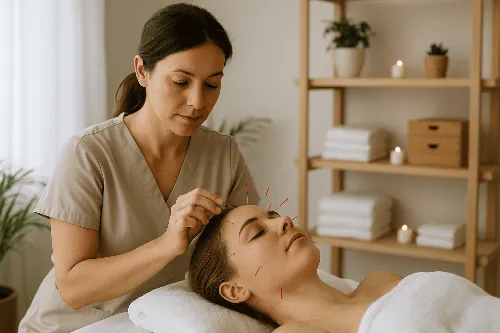
Needleheal Acupuncture: Ancient Wisdom with Modern Healing Power
Health
Holistic Nutrition Courses

Chinese Medicine

Moving Companies | Search ads
Foot pain can affect nearly every aspect of your life — from how you walk to how you sleep. Yet for many people, the solution isn’t surgery or medication — it starts with what’s on your feet. Orthopedic shoes offer a practical and long-term solution for those struggling with foot, ankle, or joint issues by providing targeted support and pressure relief.
In this guide, we’ll explore what orthopedic shoes are, who can benefit from them, and how modern options combine health benefits with everyday style.
Orthopedic shoes are specially designed footwear that supports the structure and mechanics of the foot, ankle, and leg. Unlike regular shoes, they provide enhanced cushioning, arch support, and stability features tailored to improve alignment and reduce discomfort.
They’re commonly recommended for people with specific foot conditions, but they’re also beneficial for anyone who spends long hours on their feet or deals with recurring discomfort while walking or standing.
While anyone can benefit from better foot support, orthopedic shoes are especially useful for people dealing with:
They’re also popular among older adults looking for stability, individuals recovering from foot surgery, and those with jobs that require standing or walking for extended periods.
Not all orthopedic shoes are created equal. High-quality models typically offer the following elements:

Holistic Nutrition Courses

Chinese Medicine

Moving Companies | Search ads
The main difference lies in the structure. Regular shoes often prioritize appearance over function, which can worsen foot problems over time. Orthopedic shoes are built from the inside out to match the natural shape and movement of the foot, providing both prevention and relief.
Thanks to modern designs, orthopedic options today don’t sacrifice style for support — many now resemble athletic, casual, or even dress shoes.
Buying orthopedic shoes is an investment in your long-term health. Here’s how to make a smart choice:
In some cases, orthopedic footwear may be partially or fully covered by health insurance — especially if prescribed by a doctor and deemed medically necessary. Check with your provider and keep all necessary documentation from your healthcare professional.
Foot health often goes overlooked — until pain or discomfort becomes hard to ignore. Orthopedic shoes provide a simple but effective solution to everyday problems, helping you walk more comfortably and move with confidence.
Whether you’re managing a specific condition or simply want better support during your daily routine, investing in a pair of orthopedic shoes can make a meaningful difference in how you feel — from the ground up.